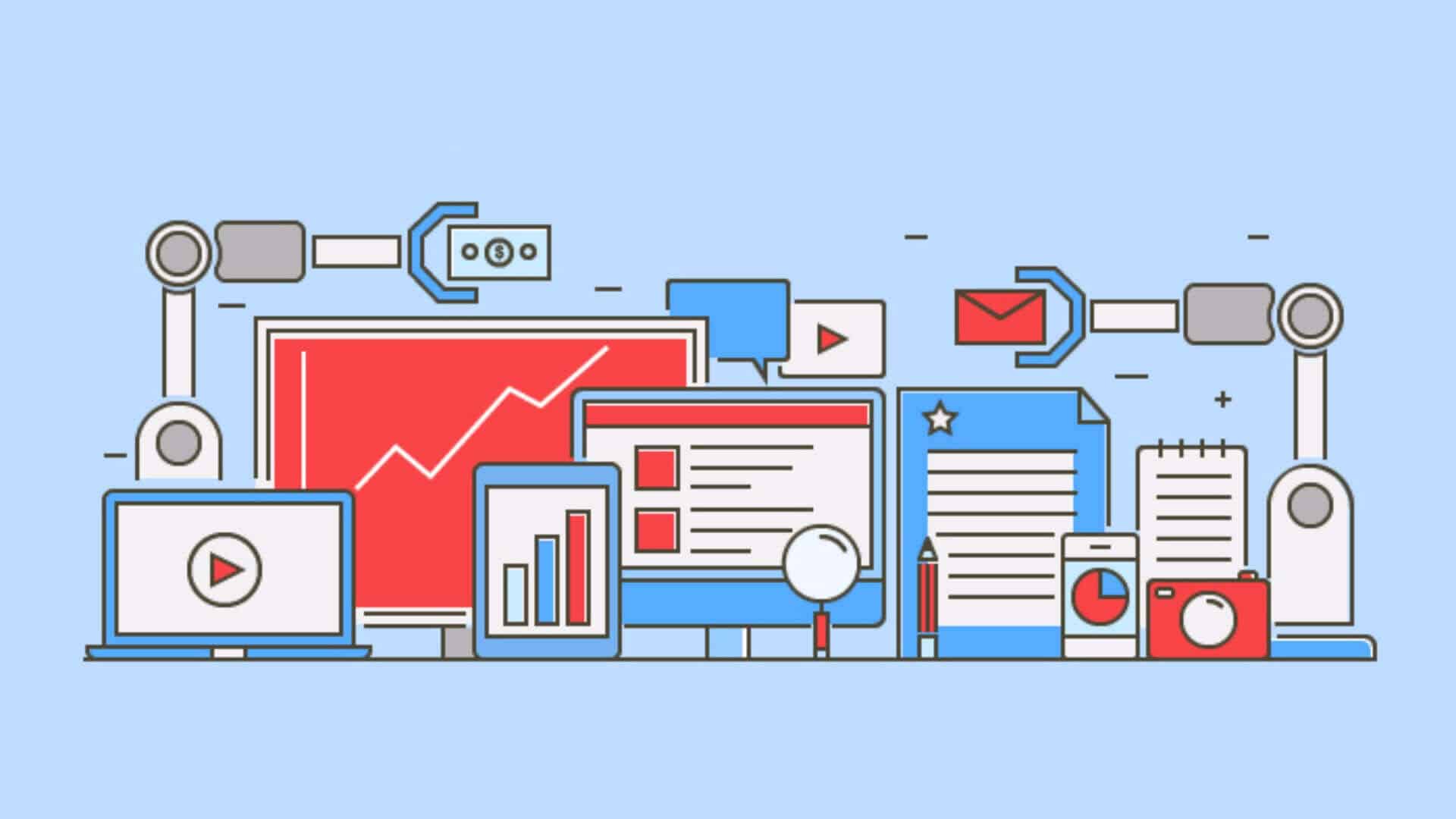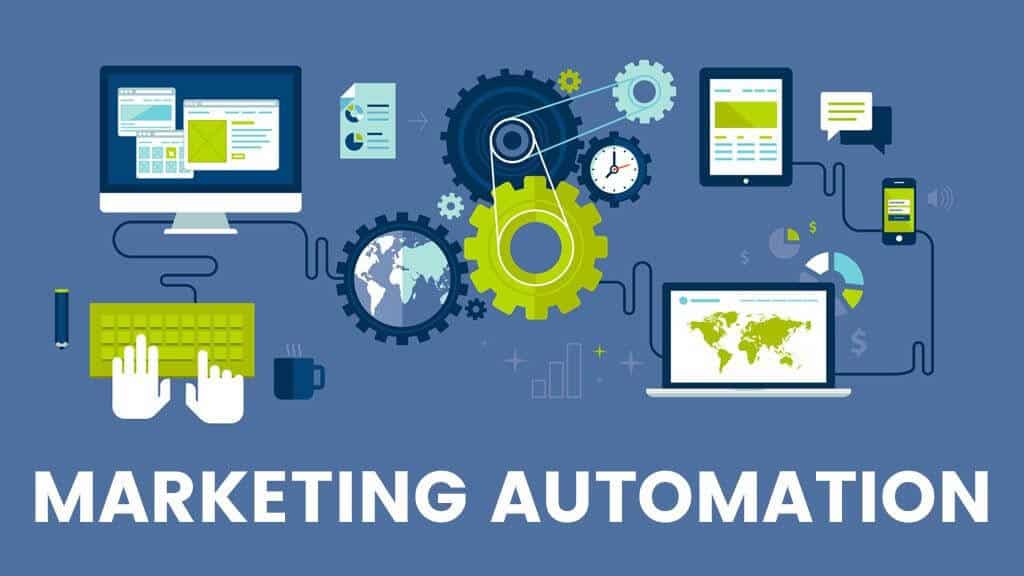What is Marketing Automation?
Marketing automation describes the use of automated processes to nurture and connect with prospects that are in the marketing or sales funnel. Marketing automation can be achieved using specialized software tools or platforms that deliver messages across different marketing channels, including email, web pages, SMS and social media, among others. The goal of marketing automation is to nurture customers, continuously delivering content and building a stronger customer relationship as a prospect moves through the marketing funnel.
Marketing automation helps to remove or eliminate repetitive tasks that marketing teams or sales staff would normally be responsible for executing manually. With marketing automation, organizations can increase their marketing efficiency, empower individual sales agents to manage a higher volume of leads, and provide a seamless omnichannel experience for prospective purchasers.

Three Myths about Marketing Automation
If the concept of marketing automation makes you think of spam e-mails and robocalls, you’re not alone. Many organizations that have yet to harness the power of marketing automation may still be confused about the exact nature of this technology and whether their customers will respond positively to receiving automated messages. Let’s address three of the most common and prevailing myths about marketing automation.
Myth #1: Marketing Automation is just a fancy way of saying “Spam”
Fact: In the early days of e-mail marketing, some companies purchased or compiled mailing lists with hundreds or thousands of prospective buyers and would send out massive e-mail blasts with uniform messaging to unsegmented, unqualified leads – a process that could absolutely be described as spamming.
With today’s technology, marketing automation has gone far beyond sending spam e-mails. Marketing automation can be used to create detailed buyer personas that inform the content of messaging and to send individualized marketing messages that are relevant to the prospect’s current position in the marketing funnel. It is also important to account for the preferences of buyers when automating your marketing efforts, and that means having prospects opt-in to receive communications from your organization.
Myth #2: Marketing Automation is only for e-mail marketing
Fact: E-mail marketing is just one of the ways that marketing automation tools can be applied. There are marketing automation tools that can be used to present customized landing pages when someone visits your website, including more targeted sales copy. You can also use dynamic forms to capture more personal information from prospective buyers and combine the data with progressive profiling to learn more about your prospects.
Marketing automation tools can be used to A/B test content on your website, including headlines, specific offers, images and the length of forms (request demo, e-mail submit, etc.). Marketing automation can be used to better qualify leads with features like subjective lead scoring and grading. Lead scoring helps your organization identify target prospects that match your ideal customer profile and may represent the best opportunity for a sale.
Marketing automation software tools can also be used to schedule social media posts and maintain a steady flow of content to social platforms without requiring constant attention. With these myriad features and possibilities, it’s safe to say that marketing automation today extends way beyond e-mail.
Myth #3: Marketing Automation is configured once and works perfectly forever
When some people think of automation, they think about “set it and forget it” systems that, once configured, will work perfectly, harmoniously and continuously to provide a steady stream of perpetual leads.
While marketing automation can help you gather and nurture more leads than you ever thought possible, it is not something that you configure once and then forgets. Marketing automation systems need to be consistently tested, refined, updated and improved upon. Once you can serve content to prospective buyers automatically, you’ll still need to optimize and refine that content over time to generate the best results.
Marketing analytics plays an important role in determining the true effectiveness of your marketing automation efforts and providing business insights into how those efforts can be refined and improved to generate more leads, more product demos, and more sales.

Marketing Automation Applications and Use Cases
Welcome Campaign
When a prospective buyer opts into your email list for the first time, they’re already expecting a welcome email from you. This welcome email can be turned into an e-mail drip campaign that introduces the prospect to your company, product or services over a period of weeks or months. Delivering valuable content and industry insights through a welcome campaign can help move prospects through your marketing funnel, position your company as an authority and industry-leader and help drive purchasing behaviors.
Top-of-Mind Campaign
If a lead has not interacted with your company in some time, an automated top-of-mind campaign can prevent them from forgetting about your company and possibly becoming customers of your competitor. Top-of-mind marketing campaigns can be executed across multiple channels and touchpoints, so there’s no need to focus solely on e-mail. This type of campaign should send valuable content to prospects and encourage engagement across multiple channels.
Industry Expertise Drip
Prospects in the middle or bottom of the funnel may have already decided to make a purchase, but are focused on determining which company is the right choice. To help ensure that your company is chosen, it is crucial that you present and position yourselves as industry-leading authorities in your niche. This can be done by delivering high-value informational content and news to prospects – things like press releases, new industry reports or projections and other materials that indicate you’re taking an active role in helping your customers succeed.
Upsell Drip
Current customers are an often-overlooked source of new business. The most successful B2B marketing organizations drive revenue through customer acquisition and by marketing additional products and services to existing customers. An upsell drip campaign can provide your existing customers with a steady stream of information and offers about products and services that may complement their existing subscription or service agreement.

Optimize Your Marketing Automation with Directive Consulting
The success of your marketing automation campaigns depends on your ability to:
- Generate buyer personas that accurately describe different types of customers in various stages of the marketing funnel
- Carefully craft content that caters to each buyer persona
- Deliver appropriate content on an automated schedule through the appropriate channels to drive target behaviors
At Directive Consulting, we’re experts at ensuring that your marketing automation campaigns drive results, including increase marketing efficiency, expand marketing reach and minimize waste on repetitive marketing tasks.
Ready to learn more? Contact us for a custom proposal.